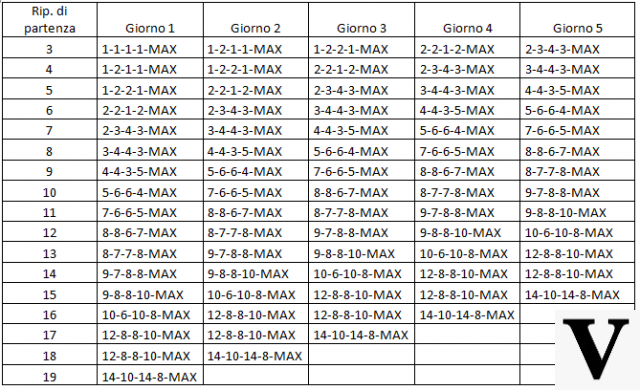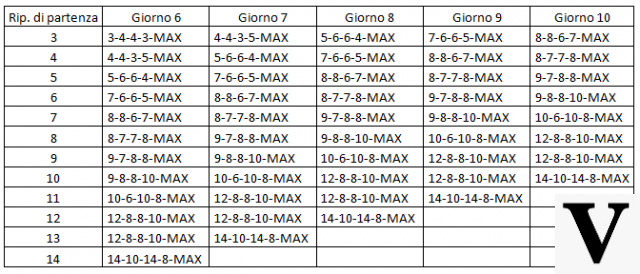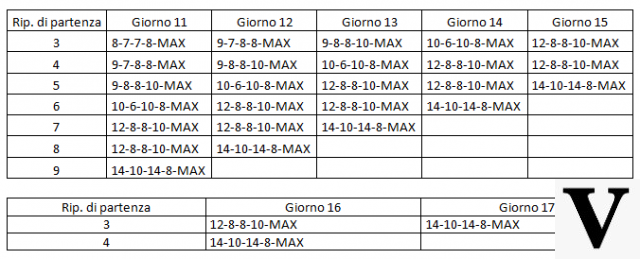Authors: Matteo Scattola Personal trainer Wellness Coach, in collaboration with Sonia Valerio Poledance Instructor
Few people know it but one of the sports that is becoming increasingly popular among the most athletic and enterprising girls is pole dance.
An art or rather a sporting activity that is certainly complex but that everyone can start with some little advice, in order to avoid leaving the pole after a short time. Poledancers look graceful, delicate and light, but they hide a tiger spirit and a strength to be envied by any sportsman.
What is pole dance?
Pole dance is a mixture of artistic gymnastics and ballet, as it includes movements from both disciplines.
It is important to underline that pole dance has nothing to do with lap dance which is not a sport and is not a sporting activity but a playful one.
As for the genesis of this sport, there are no clear data. Some data support his claim in the 80s, other sources claim that pole dancing originated in ancient China. In fact, in ancient China the pole was used for the first time as a gymnastic tool by acrobats to impress the public with their agility and resistance.
However it is known that it was only in 2010 that pole dance was recognized for the first time as an official discipline in your country. In addition, it also ended up on Sanremo, a well-known national program.
Benefits of pole dance
Practicing pole dance has numerous physical benefits as it is a type of sport that easily allows all muscles to be trained. Being a very intense type of sporting activity, it requires dedication, time and practice.
As for the benefits, pole dancing strengthens our coordination, our balance and improves our stamina and flexibility. The movements on the pole also improve our agility.
From the point of view of muscle training, as anticipated before, pole dance involves several muscles including the most important ones, the abdominals, biceps, triceps, buttocks. In addition, it has beneficial effects on posture and our mobility.
In addition to the physical benefits listed above, pole dancing significantly improves our body's self-esteem and awareness.
Pole dance has no contraindications, however, as we have seen previously being an intense sporting activity, it requires an important athletic preparation in order to prevent any injuries.
Pole dance for beginners
The initial approach is traumatic for many, who imagine it to be a game and find themselves in front of a real discipline. Movements with attention to detail and full body work with particular attention to arms, thighs and abdomen which are continuously stimulated. The functionality of the poledance lies in its ability to activate all body areas in an exceptional way, but there are some parts that you will need to have minimally developed if you do not want to waste the first month swearing.
The initial work will be based on pulling / pushing actions by the arms and stabilization by the core.
Having said that, let's see what strengthening exercises could be for a beginner.
Parallel tractions to the ground
we position ourselves under a bar or barbell, supine and grasp the bar with a shoulder-width grip. The legs must be fully extended forward and the abdomen and buttock in contraction for the duration of the exercise. At this point we pull our body towards the bar, paying attention to maintain a linear trajectory, exhaling in the ascent phase and inhaling in the descent.
Tactical push up
it is a “tight” push-up, ie the hands are shoulder-width apart and the elbows turned back. They are more difficult than the classics because they require more intervention by the triceps but they are much more functional for our purpose.
Plank
This exercise that has already been seen in the guide "Abdominal this unknown".
These 3 exercises can be included in specific lessons or as a preparation before approaching this discipline and will allow you to face the challenges that will be proposed to us with greater tranquility.
The protocol with which we can face them can be taken from the article “The planning of resistant strength training in the free body” both as regards parallel tractions on the ground and for tactical push ups; i.e. a progressive programming from time to time using the protocol below:



For the plank instead we perform series of 30 ″ between one exercise and the next of the previous ones.
This program if performed several times a week will certainly improve your performance and endurance.
Coming soon we will see more of supplementary workouts and talk about nutrition.
Conclusion
Pole dance, not to be confused with lap dance, is an intense sporting activity that involves training the whole body, giving enormous benefits on posture, agility and endurance. Its origin is not very clear, however pole dancing has now become a very popular sport especially among young girls.


























